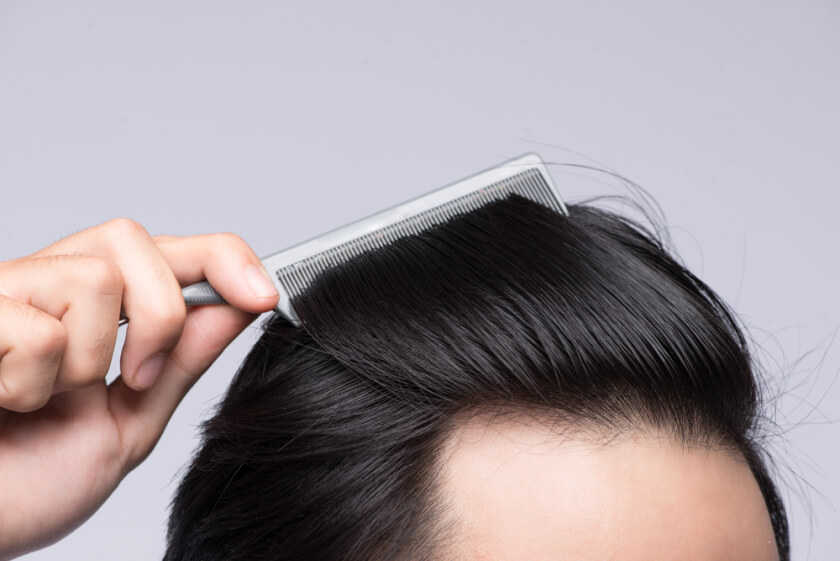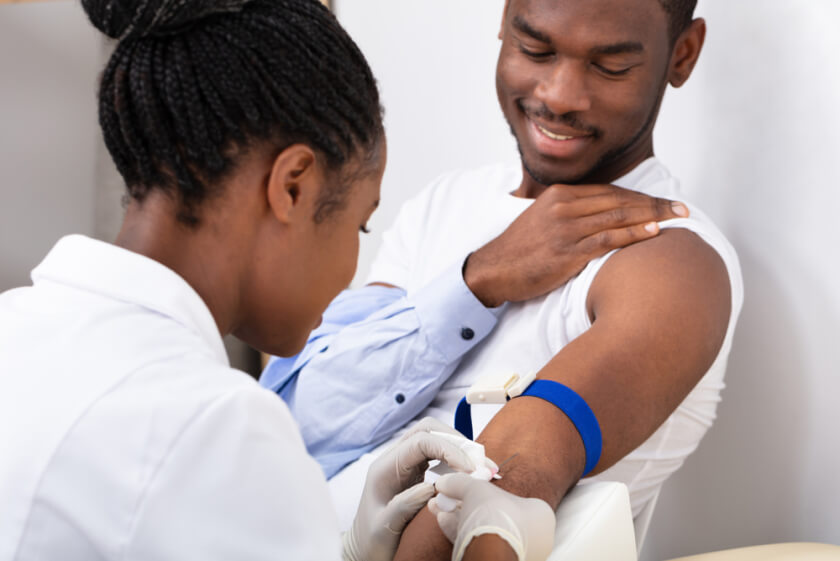Anyone who’s struggling with the different forms of alopecia or excessive thinning of scalp hair can greatly benefit from a hair transplantation surgery. It’s one of the most viable solutions for hair regrowth but the success of the treatment will depend on the survival of the grafts. A common method to ensure the growth of transplanted hair is PRP therapy.
So how do platelet-rich plasma injections help with hair transplants? PRP can be given during the surgical procedure to prepare the areas where the grafts will be placed. They can help assure that the follicles will not be damaged during the removal and transfer to the recipient areas. PRP injections are also necessary to support healthy hair growth and facilitate tissue repair and healing in the donor sites.
Is It Important To Get PRP For Hair Transplant?
Hair transplants are considered the gold standard in hair loss treatments. According to clinical studies, the transplantation technique has a positive success rate of 85 to 90 percent in patients with hair loss.
However, there are still some situations where the transplant procedure can fail to produce the desired hair growth results. Some of the factors that can possibly affect the success of a hair restoration surgery are:
- Improper graft handling which can cause the donor hair follicles to dry out and result in the loss of the graft
- Poor extraction technique which can compromise the usability of the hair graft
- Depletion of oxygen and nutrients which are required to keep the follicles healthy during transplantation
- Inadequate graft storage and preservation practices
- Changes in the temperature in the new follicular environment
To maintain the quality of the grafts and stimulate successful hair growth, a hair transplant specialist can consider administering PRP injections during the transplantation process. It can be used during the preparation of the donor follicles and after the scalp skin has been injured to prepare the site where the grafts will be placed.
Benefits of Using PRP Injections After Hair Transplant

Platelet-rich plasma treatments have an excellent reputation as a regenerative treatment for tendon injuries and other sports injuries. More recently, many doctors and surgeons have been using PRP for various cosmetic procedures including as a treatment for hair loss.
Injections of platelet-rich plasma contain numerous amounts of growth factors that are necessary for the healing process of damaged tissues and follicle cells. When used in conjunction with hair transplant, PRP shots can help ensure that the implanted grafts will survive and support the active hair growth cycle.
Here’s an overview of how the application of PRP actually helps in the process of hair transplant:
1) Maintains the quality and increases the viability of donor follicles
From the time that the hair follicles are extracted from the donor area to the actual implantation to the scalp, it is essential that they are handled with care and stored in the right environment to prevent the loss of the graft.
It’s a common practice to place the extracted hair follicles in a solution with PRP during the transition period just before transplanting them to the designated scalp area. This provides a conducive environment with ideal temperature and nutrients to prevent the dehydration of the grafts and increase the success rate of the procedure.
2) Improves blood supply to the recipient areas with hair loss
PRP injections are also essential in helping nourish the follicles and regrow healthy hair in the transplanted areas. The platelet-derived growth factors in the injections can develop blood vessels around the hair follicles which can improve blood flow and circulation of nutrients and oxygen that are needed to maintain hair health. This will also help improve the hair thickness in the areas with the grafts.
3) Promotes wound healing after transplantation
Since it’s a surgical procedure, hair transplants come with some risk of scarring after the treatment. While patients can return to their normal activities after a few days from the transplant, they can expect to wait at least 2 weeks for the post-surgical scar to heal.
PRP can help manage downtime after a hair transplant by encouraging faster healing and repair after the procedure. The application of concentrated platelets and growth factors can enhance the natural process of healing of the donor and recipient areas. It can improve the recovery period and minimize the formation of scar tissue and injury at the transplant site.
4) Strengthens existing hair roots
PRP therapy can also help activate stem cells for follicular tissue regeneration to strengthen the roots where new hair strands will grow. After a hair transplant, PRP injections can awaken the dormant hair follicles to stimulate hair growth activity and preserve the implanted grafts.
5) Sustains healthy hair regrowth after surgery
The rate at which new hair grows can vary per individual depending on their age and genetics. Additionally, some types of hair loss can be caused by significant changes in a person’s hair growth cycle. Using PRP with hair transplant can have positive effects on the hair cycle.
For one, it can encourage a faster transition from telogen to anagen phase where the follicles will actively grow new hair. PRP also has an anti-apoptotic activity which can improve cell growth to delay the catagen phase and prolong the growth phase. This can help assure the survivability of the transplants and provide improved hair density in the recipient areas.
Can You Get PRP As A Standalone Hair Loss Treatment?
For patients who are hesitant about undergoing a complex surgery for hair restoration, they can choose to get PRP as an alternative therapy for hair loss. It can be given on its own without needing a hair transplant, although patients can expect to have a regular maintenance session after their initial treatment to get optimal results.
What To Expect With PRP for Hair Restoration

PRP is widely used nowadays to treat various types of hair loss such as male and female pattern baldness, androgenic alopecia, and thinning hair. Unlike a transplant, it doesn’t require extensive surgery and only needs a quick blood draw and injections to the scalp. Here’s an overview of the PRP procedure for hair loss:
- The treatment begins with a blood extraction from the patient’s arm.
- The collected blood samples will then be transferred to a tube and placed in a centrifuge to separate the concentration of platelets from the red and white blood cells. Depending on the method of spinning, you can get at least 5 to 10 times higher concentrations of platelets in PRP compared to what is found in normal blood.
- After centrifugation, the serum will undergo an activation process by adding thrombin or calcium chloride to stimulate the release of the different growth factors.
- Once activated, the PRP serum can be injected into the areas with visible signs of hair loss.
Advantages of PRP over Hair Transplant
There are many positive studies that show the effectiveness of PRP treatment for hair loss. According to these reviews, PRP offers several advantages over hair transplantation such as:
- Non-surgical procedure for hair restoration
- Requires zero downtime and no major side effects
- Eliminates possible surgical complications
- It’s autologous so it virtually has no risk of an allergic reaction
PEP Factor: An Effective Alternative To PRP Injections
Not all hair loss patients can be a good candidate for autologous platelet-rich plasma therapy, especially if they have low platelet count, bleeding disorders, or active infection. It’s worth exploring PEP Factor products as an alternative to PRP injections after a hair transplant.
PEP Factor contains a potent blend of nutrients, copper peptides, and fibroblast growth factors that can support collagen growth and improve follicle health to promote healthier hair production. Its unique formulation can be applied topically so patients don’t have to undergo any blood extraction and needle injections.
Shop PEP Factor and Other Tools For Hair Rejuvenation at FACE Med Store
PRP injections can be a great complement to hair transplant as it offers numerous benefits like enhancing hair growth and speeding up the healing process. But to patients who may not be a good fit for PRP therapy, PEP Factor products can also be a safe and effective alternative to promote regrowth after transplantation.
FACE Med Store is a reliable provider of PEP Factor products for skin and hair rejuvenation. We put a premium on providing the best customer service and giving clients affordable alternatives for medical tools without compromising their quality. To inquire about our stocks and products, call us today.






